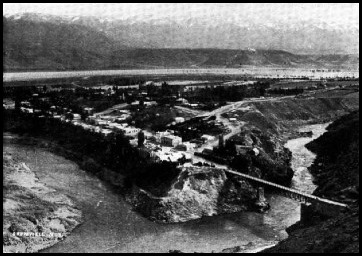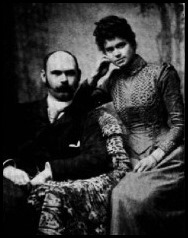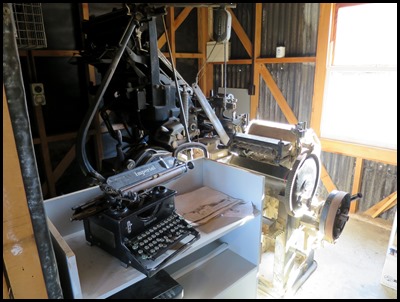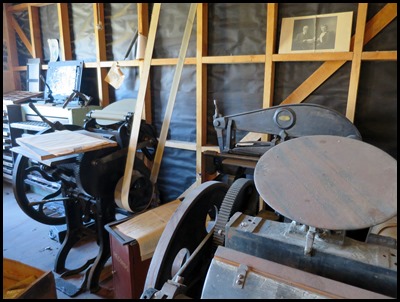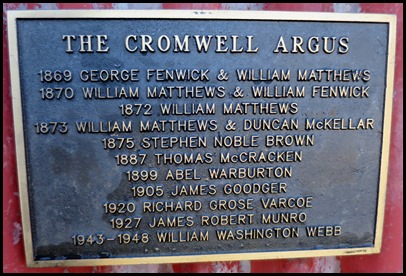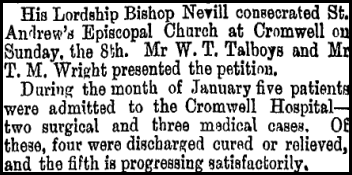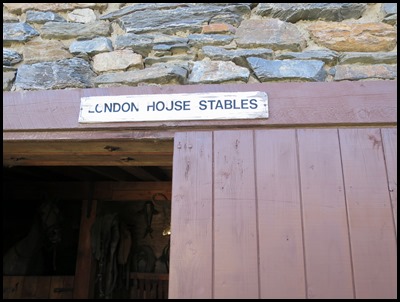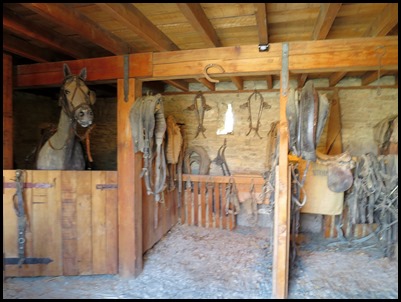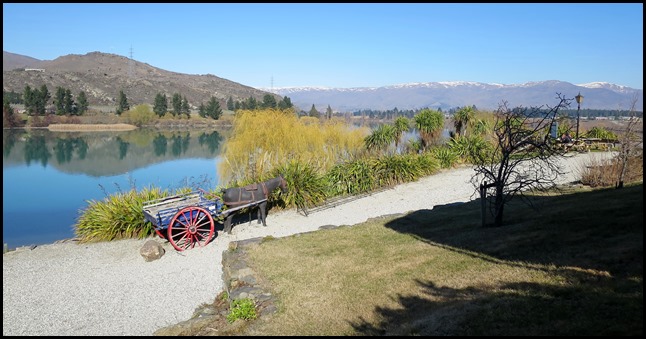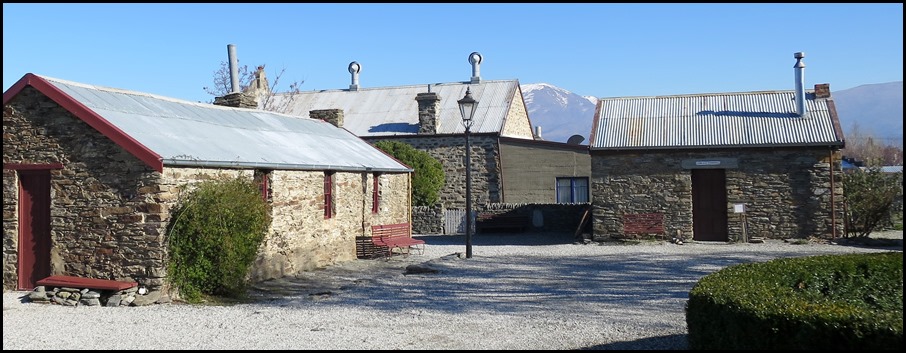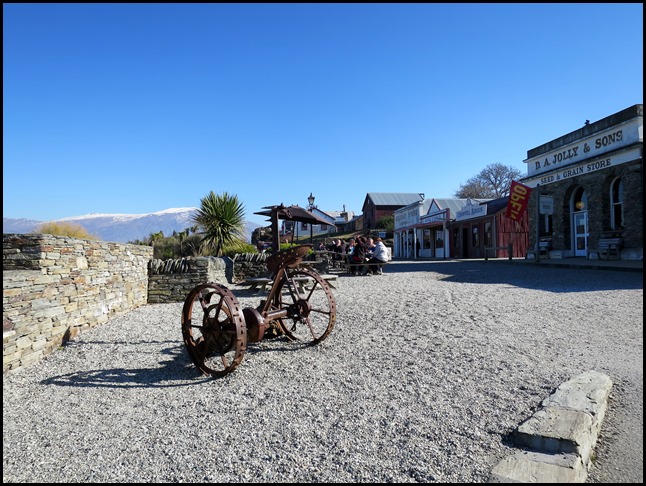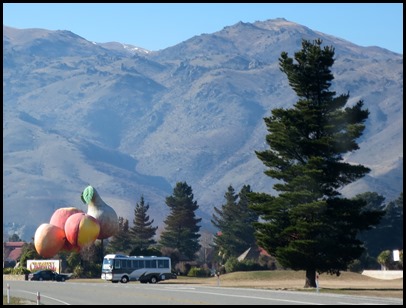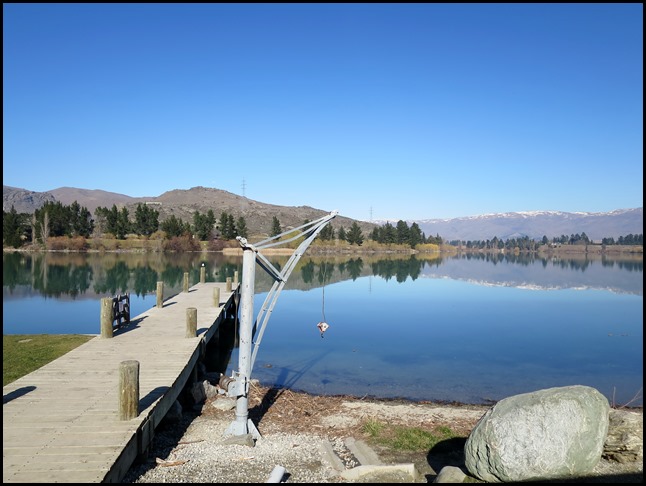Old Cromwell

|
Old Cromwell
Town
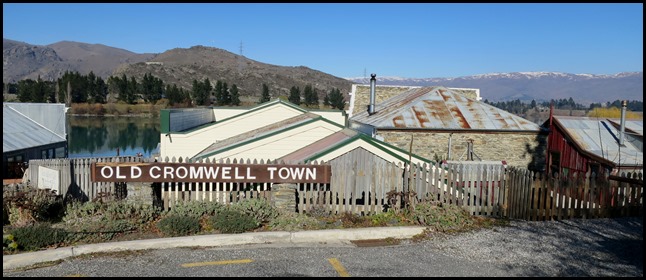 While we were exploring Cromwell in
Mabel, we found a turning that took us to Old Cromwell
Town. Worth a bimble.
 Gorgeous
views.
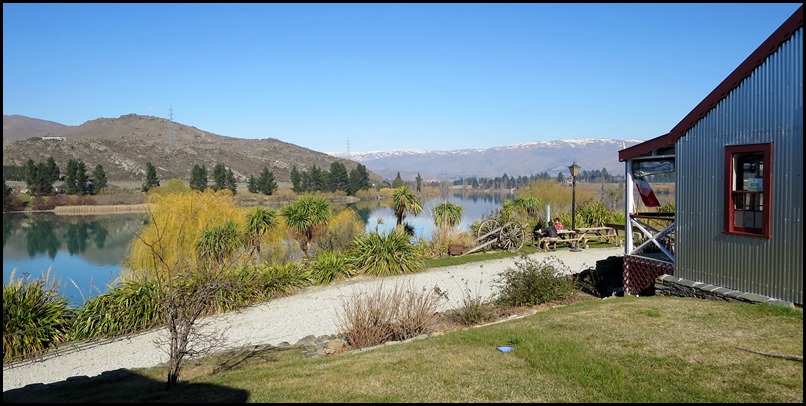 Beautifully
maintained.
 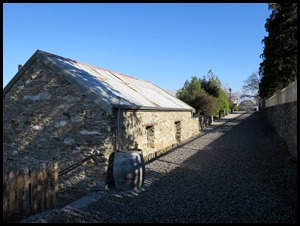 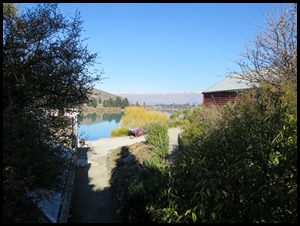 Written description from some years ago:- “Cromwell stands on a point of land where the rivers Clutha and Kawarau conjoin and form the Molyneux. From the configuration of the site it was known to the pioneer settlers as “The Point,” but when a town sprang up, in the early days of the gold rush, it was named “The Junction.” However, on being proclaimed a municipality in 1866, the town was re-named Cromwell. A boatman, charging half-a-crown per head, rowed passengers across the Clutha, and, later, a small footbridge was privately constructed, for the use of which the proprietor charged travellers the same toll, until “The Old Man Flood” of 1864, washed away his property. In that year the Government commenced the construction of a bridge—which was reconstructed in 1891—and completed it in 1866, at a cost of £28,000. Superintendent Thomas Dick conducted the opening ceremony amidst great jubilation. A bullock was roasted whole, free beer was served out, and the township was for some days what a euphemistie writer might term a scene of jollity. Two children were born at Cromwell in 1884, but as the nearest registrar lived at Waikouaiti, 150 miles away, the registration was postponed somewhat beyond the legal limit. From the early days to the present time Cromwell has been a mining town. There is but little agricultural land in the neighbourhood of the borough, but much of the land is eminently suitable for fruit growing. On the surrounding hills large flocks of sheep are depastured, but the rabbit pest considerably reduces the amount of feed. On the Morven Hills and surrounding country Messrs John and Allan McLean at one time owned a sheep run, which was reputed to be the largest pastoral property in New Zealand.
Cromwell is situated 148 miles northwest from Dunedin, and at present (August 1904), the nearest railway stations are at Ida Valley and Lawrence. From these stations a coach service connects with Cromwell, and extends to Pembroke and Queenstown. From the Cromwell Gorge road several dredges are seen at work in the Molyneux River. The famous Hartley and Riley Company and the Electric Company's dredges, which have obtained the largest yields, are working close to Cromwell. The whole district is auriferous, and from 1862 to 1896 large quantities of gold were obtained from the quartz reefs and sluicing claims. A period of some depression then set in until the dredging industry was established in 1899, since which almost the whole of the Molyneux and tributary rivers have been dredged for gold. This industry will continue to be the chief one for many years to come. Cromwell is a compact town, with an area of 640 acres, and a population of about 700. The borough, which is divided into two wards, Kawarau and Macandrew, is bounded on the east side by the Clutha River, and on the south side, by the Kawarau river; on the north and west side there is a town belt ten chains in width. There is a recreation reserve of twenty acres, which has been planted with trees. A reservoir containing 2,500,000 gallons, at an elevation of 320 feet above Cromwell, supplies the town with water, and provides the local fire brigade with a high pressure supply. The town is lit with kerosene lamps, and the business premises, including the post and telegraph office, banks, stores, and hotels, are in the main street. There are churches of the Presbyterian, Anglican, Catholic, and Methodist denominations, a public school, hospital, court-house, Athenaeum - with a public and lending library—and a local weekly newspaper. The Cromwell Brass Band, which receives an annual subsidy of £20 from the Corporation, periodically gives open-air concerts. There are also cricket, football, tennis, and golf clubs.”
Dr. George Alexander Morris, Resident Surgeon of the Cromwell District Hospital, was born in 1860, at Dairy, Ayr shire, Scotland. He was educated in his native place and at Glasgow Academy. He studied at the Glasgow University and gained his degrees of M.B. and C.M. in 1883. Dr. Morris was in practice for two years at New Abbey, Gallowayshire, and for a like period at Fenwick, Ayrshire, before coming to Port Chalmers, by the SS Coptic in December, 1888. Till February, 1890, Dr. Morris was in practice at Mataura, and since then he has been resident surgeon at the Cromwell Hospital. He is also surgeon to the local Oddfellows. Dr. Morris was married, in 1891, to a daughter of the late Mr. D. Trevethan, of Cornwall, England, and has one son and one daughter. The Cromwell District Hospital was established in 1875, and occupies a central position on a section of thirty-two acres, granted for hospital purposes. It is surrounded with a well-grown plantation of ornamental trees and the ground is laid out in a vegetable garden, orchard and paddocks. The building, which is of stone, contains three wards, two for men, and one for women, and there are altogether ten beds. In addition to the wards there are quarters for the wardsman and matron, and the customary provision is made for the dispensary, kitchen, wash house, and outhouses.
The Cromwell Argus and Northern Gold-Fields Gazette was published from 1869 to 1948.
The Cromwell Argus and Northern Gold-Fields Gazette- Abel Warburton, proprietor, Melmore Terrace, Cromwell. Bankers, Bank of New Zealand. “This journal was established in 1869, by Messrs W. Fenwick and J. Matthews, now of the “Otago Daily Times and Witness,” Dunedin, and was conducted for twelve years by Mr. Thomas McCracken, prior to being acquired by Messrs Warburton and Scott. The present owner has published the “Argus” since the 1st of October, 1898. It is a bi-weekly journal, issued on Tuesday and Saturday mornings, consists of six pages of seven columns each, and circulates largely throughout the Otago Central goldfields. The plant consists of a Wharfedale printing machine, and a good jobbing plant, and the premises consist of a wooden and iron building, erected on a corporation leasehold.”
The Argus Proprietors.
The Argus 1880 and 1997.
London House Stables.
Behrens Barn
Max Henry Behrens was born in Germany in 1828. After
learning the business of coach building in his homeland, he immigrated to
Victoria, Australia. He worked in the Australian gold fields until 1862 and then
came to the new gold fields of Bannockburn. He also worked as a ‘reefer’ on the
Carrick gold field, a quartz gold mining area above Bannockburn where they
drilled the quartz reef to find gold. In 1874 he moved to Cromwell, establishing
a coach building, wheelwright and carpentry business.
This wooden barn was built by Max and probably used
as a livery stable for the nearby Globe Hotel. The barn has unique wooden louvre
windows. The method devised to open them predated operable glass louvres by
about sixty years. A central wooden rod is rotated through ninety degrees. The
four loose boxes opening off the main passage have half stable doors, mud floors
and feed boxes in each corner. The passage has small schist rocks laid on edge
to provide purchase for the horse’s hooves. The building has had many uses and
in later years was the local undertaker’s workshop for the building of coffins.
Max Behrens was Mayor of Cromwell from 1881 to 1882.
He served for twenty five years as a member of the Cromwell Hospital Committee
and, as well, served on the Athenaeum and School Committee. He was also a member
of the Cemetery Trust. He retired from business in 1904 and returned to his
homeland, Germany, when the First World War broke out in 1914.
At that time there was some attempt to whitewash
Max’s identity by calling him Dane but he was a Schleswig German and before
returning to Germany he expressed the pious wish that “I hopes I live to see
the day when Germany has a schmack at England.”
Max lived for many years with his eccentric friend Harry Young, the
local tinsmith. Harry invested money in the gold dredge Electric which
eventually made him a wealthy man and, on his death, left his money to Max.
Unfortunately for Max he had already left for Germany and the money did not
follow him as it was frozen as ‘enemy property’. Perhaps England did the
‘schmacking’ after all.......
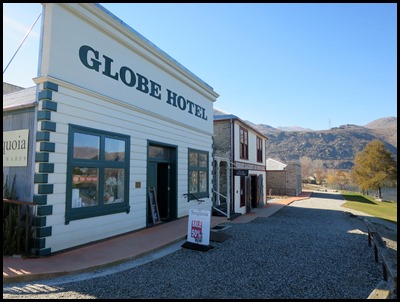 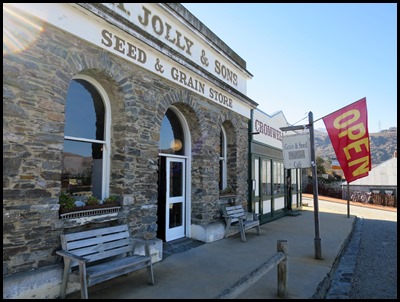 The Globe Hotel and Jolly & Sons Seed & Grain Store.
Cromwell was originally known as
"The Junction", being at the confluence of the Clutha and Kawarau Rivers. In 1862, gold was discovered
below the Junction by two miners, Hartley and Reilly. Once the word of a gold
strike was out, there was an influx of several thousand miners to the
area.
As gold ran out, Cromwell became the service centre for an extensive farming and stone fruit growing area. It has a strategic location between the Lindis and the Haast passes, and acts as a hub between the towns of Wanaka, Queenstown and Alexandra. The former is commemorated with the giant sculpture of stone fruit which stands outside the northern end of the town. Cromwell lay at the confluence of the Clutha River and Kawarau River, which was noted for the difference between the colours of the waters of the two rivers and also for the historic bridge at the convergence of the two. Since the construction of the Clyde Dam and the filling of Lake Dunstan in the early 1990’s the river confluence was drowned, as was the old town centre. The decision to build Clyde Dam and use Cromwell as the accommodation base brought many changes to the town. Approximately one-third of the town was rebuilt on higher ground. The changes included the doubling of the residential area, relocation of the old town centre (now called "Old Cromwell Town"), upgrading of services, and the provision of modern educational and sports facilities, and a new bridge. The relocated town centre, or "The Mall," now houses the main retail, service and civic buildings in Cromwell. Several of the old buildings of the town which escaped the flooding have been retained as a historic precinct close to the shore of the Kawarau. The town was named after Oliver Cromwell and, as well as "The Junction", the town was previously known as "The Point" and "Kawarau".
The future of Cromwell is in farming, horticulture, viticulture and tourism. Cromwell is nicknamed the "Fruit Bowl of the South".
ALL IN ALL A GRAND MIX OF OLD AND NEW REMINDED ME OF MORWELLAM QUAY |
